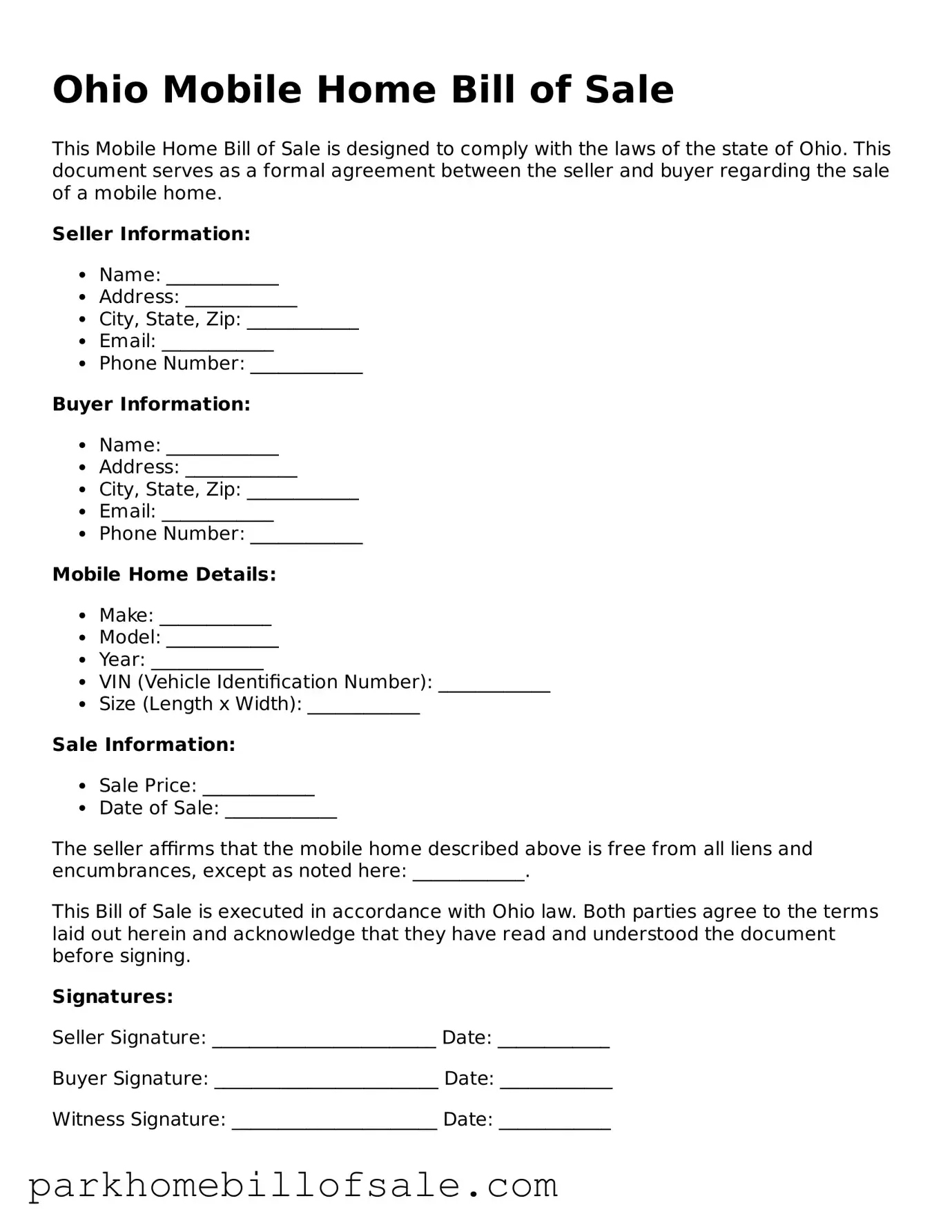Documents used along the form
When engaging in the sale or transfer of a mobile home in Ohio, several additional forms and documents may be necessary to ensure a smooth transaction. These documents help clarify ownership, facilitate the transfer process, and ensure compliance with state regulations. Below is a list of commonly used documents that accompany the Ohio Mobile Home Bill of Sale form.
- Title Transfer Application: This form is essential for officially transferring ownership of the mobile home from the seller to the buyer. It must be submitted to the Ohio Bureau of Motor Vehicles (BMV).
- Affidavit of Ownership: This document serves as a sworn statement by the seller affirming their ownership of the mobile home. It is particularly useful if the original title is lost.
- Purchase Agreement: A written contract that outlines the terms of the sale, including the price, payment method, and any conditions agreed upon by both parties.
- Inspection Report: This report details the condition of the mobile home at the time of sale. It can help protect both the buyer and seller by documenting any existing issues.
- Bill of Sale for Personal Property: While the Mobile Home Bill of Sale focuses on the mobile home itself, this document can cover any additional personal property included in the sale, such as appliances or furniture.
- Sales Tax Form: This form is used to report and pay any applicable sales tax on the transaction. It ensures compliance with state tax laws.
- Proof of Insurance: Buyers may need to provide evidence of insurance coverage for the mobile home before the sale can be finalized.
- Park Approval Letter: If the mobile home is located in a park, the buyer may need to obtain approval from the park management to ensure compliance with park rules and regulations.
- Notarized Signature: Some transactions may require the signatures of both parties to be notarized to add an extra layer of authenticity and legal validity.
Incorporating these documents into the transaction process can help ensure that all legal requirements are met and that both parties are protected. Understanding each document's purpose can facilitate a smoother transfer of ownership and prevent potential disputes in the future.
